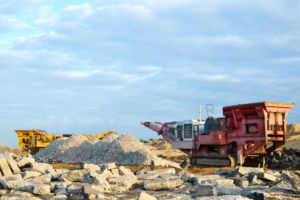Is Liquified Natural Gas (LNG) really the clean energy alternative it is made out to be?

In recent years, there has been growing interest in liquified natural gas (LNG) as a potential clean energy alternative by all parties with interest in the decarbonisation trend. This includes energy companies, investors, governments and even the broader public.
LNG has pros and cons
With concerns about climate change and the need to reduce greenhouse gas emissions, many see LNG as a viable option to replace fossil fuels such as coal and oil. However, like any form of energy production, there are both advantages and disadvantages to using LNG. And of course, just because a company has exposure to this commodity, it doesn’t mean the company will successfully capitalise and therefore be a sure money maker for shareholders.
In this article, we will explore the background and basics of LNG, as well as discuss its potential as a cleaner energy source. We will then look at a few ASX companies with exposure to it.
What is Liquified Natural Gas (LNG)?
LNG is essentially natural gas that has been cooled down to -162°C (-260°F) in order to convert it into a liquid state. This process of liquefaction reduces the volume of natural gas by about 600 times, making it easier and more efficient to transport over long distances. LNG is primarily composed of methane, with small amounts of other hydrocarbons such as ethane and propane.
Just like its non-liquified cousin, there is demand for this commodity from Australia, especially in Asia-Pacific countries lacking their own reserves. Australia exported 82Mtpa in 2024 which is ~20% of global shipments. The world’s other two major producers and exporters are the USA and Qatar. However, lower oil prices meant that it only made $67.7bn compared to the $90.3bn made in 2022 when production was only 0.7Mt lower.
Is LNG really a clean energy alternative?
The answer to this question is not a simple yes or no. On one hand, LNG has the potential to produce fewer emissions than other fossil fuels. When burned, natural gas produces about half as much carbon dioxide (CO2) as coal and around 30% less than oil. Additionally, natural gas emits very little sulphur dioxide (SO2), nitrogen oxides (NOx), and particulate matter compared to other forms of energy production.
However, the process of extracting and producing LNG also has its own environmental impacts. The extraction of natural gas through hydraulic fracturing, or “fracking,” has been linked to water contamination, air pollution, and even earthquakes. Transportation of the gas also poses risks, as accidents during transport can lead to leaks and explosions.
Furthermore, while natural gas may emit fewer greenhouse gases when burned, methane – the primary component of natural gas – is a potent greenhouse gas itself. Methane has a global warming potential that is 25 times higher than CO2 over a 100-year period.
What are some LNG stocks?
It is important to note that there are no specific shares specialising in liquified gas. Most companies with exposure are oil and gas generalists that happen to have some gas projects that involve the liquified version of gas.
Two companies are Woodside (ASX:WPL) and Santos (ASX:STO). These two companies came close to merging in the summer of 2023-24, only for talks cease. The whole basis for the merger talks was that Santos was undervalued, and one of the reasons was that the market accredited lesser value to its prized LNG assets.
One activist investor (L1 Capital) had the idea of splitting Santos’ LNG assets at Gladstone into its own business. Woodside also has exposure to LNG, in the form of its $16.5bn Scarborough project that has been intended to start in 2026 – at least, that is the plan and remains so, but it is now scheduled for the back end of the year, and it wouldn’t be unreasonable to expect delays into the 2nd half of the year.
Woodside has sold a 10% stake to LNG Japan, indicating that there is demand for Australian LNG from Asia. In our view, if Woodside and Santos come together, it just might be the best ASX LNG stock.
What about the smaller players?
Other players have exposure too. We don’t have space to discuss them all, but think it is worth looking at the only other large cap with exposure – Beach Energy (ASX:BPT). Beach has man gas projects, but its LNG project is the Waitsia Gas project. This project has suffered from cost blow outs and construction delays. It is currently scheduled for early CY24, although this time frame could blow out further. We think these examples are enough to illustrate that the liquified version of natural gas is no fad, but it is harder to deliver than to conceive.
Not all of them will be successful investments
In conclusion, while LNG may have some advantages as a cleaner energy alternative, it is not without its own environmental impacts and drawbacks. Continued research and advancements in technology may help mitigate some of the negative effects of production, but it is ultimately up to policymakers and individual companies alike to make informed choices about our energy sources for a sustainable future.
Furthermore, even if LNG is the best thing since sliced bread, it doesn’t mean all companies with exposure to it will necessarily succeed, let alone that it will be ‘game changers’ for them and their investors. It is important for investors to conduct necessary due diligence on any companies prior to investing, as goes with any listed company. And of course, even if companies are worth investing in, it doesn’t mean they will always be.
What are the Best ASX Stocks to invest in right now?
Check our buy/sell tips
Blog Categories
Get Our Top 5 ASX Stocks for FY26
Recent Posts
Develop Global Wins $200m OceanaGold Contract- What It Means for Investors
Develop Global (ASX: DVP) climbed 4% to A$4.36 on Friday after securing a A$200 million underground development contract with global…
Nova Minerals Drops 14% on $20m Capital Raise- Buy or Avoid?
Nova Minerals (ASX: NVA) dropped nearly 14 per cent to A$0.90 following the announcement of a US$20 million (approximately AUD…
WiseTech (ASX:WTC) Rises After Richard White Cleared of Misconduct – Should You Buy the Dip?
WiseTech Global (ASX: WTC) climbed 3 per cent to A$70.18 on Friday after founder and Executive Chairman Richard White was…



